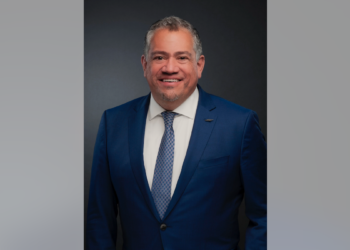
Haitians in Ohio fear for safety after Trump’s false claims
Haitians living in Springfield, Ohio say they’re on edge after Republican Vice President nominee JD Vance amplified false claims about immigrants there.
The claim: Post implies Donald Trump’s policies led to influx of Haitian immigrants to Springfield, Ohio
A Sept. 15 post on Threads (direct link, archive link) shares a post on X, formerly Twitter, from vice presidential candidate JD Vance that says “Kamala Harris dropped 20,000 Haitian migrants into a small Ohio town and chaos has ensued.”
The Threads post tries to add context, saying “Haitian migrants began arriving in Springfield in 2018 when Trump was President.”
The post was liked more than 700 times in four days.
More from the Fact-Check Team: How we pick and research claims | Email newsletter | Facebook page
Our rating: Missing context
The implied claim is wrong. President Donald Trump unsuccessfully tried to end a program that allows Haitian nationals to remain and work in the U.S. legally less than a year into his presidency. The growing Haitian immigrant population in Springfield was a result of efforts by local leaders to attract new workers.
Trump attempted to deport Haitian immigrants
Springfield was thrust into the national spotlight in the Sept. 10 presidential debate when Trump repeated a false claim that Haitian immigrants in the city were eating other people’s pets. Trump insisted the claim was true, amplifying the notion that the immigrants were harming the community. City leaders say the immigrants are welcome and integral parts of the community, and USA TODAY and other outlets have debunked the claim of pet eating.
The Threads post pushes back on Vance’s claim by implying Trump was responsible for the immigrants’ presence. That’s not what happened, though.
The clearest evidence Trump was not responsible for the increasing number of Haitian immigrants in the city was that he attempted to send them back to Haiti. He tried to end a program that allows people from Haiti and other countries to reside and work in the U.S. legally.
Temporary Protected Status, as the program is known, is given to qualifying individuals allowing them to remain in the country because conditions are considered unsafe in their home countries. The authorizations are temporary but can be renewed repeatedly as long as recipients stay in good standing and their prior homes are still considered unsafe.
Haitian nationals were first eligible for the status in 2010 when an earthquake destroyed much of the country’s infrastructure. The Trump administration announced in November 2017 that it wanted to end this protected status eligibility for Haitians, saying the country was ready for its citizens to return safely. That would have given about 60,000 Haitians with protected status until July 2019 to either obtain permanent legal status in the U.S. or face deportation, USA TODAY reported at the time.
A series of legal battles followed, with the fate of the program unclear until President Joe Biden took office and extended the program. Biden’s administration has extended the designation several times, with Haitian nationals potentially eligible for the status if they resided in the U.S. as of June 3. More than 200,000 Haitian nationals were in the U.S. with the status as of March 31, with thousands more possibly eligible, according to a Congressional Research Service report.
Fact check: Photo of man holding dead goose not taken in Springfield, Ohio
The growth of the Hatian population in Springfield comes from actions undertaken by local officials. Springfield, which had shrunk in population for several decades, needed workers. Those opportunities, a relatively low cost of living and support from the community played big roles in drawing Haitians to the city, according to a 2023 Dayton Daily News article examining Springfield’s growing Haitian population.
The city began pitching itself after 2014 to potential employers as a good place for new factories and distribution hubs, and several new companies opened facilities there by the end of the 2010s, the New York Times reported. A lack of workers opened the door for Haitian immigrants to work, and word of mouth helped rapidly draw more to the city, experts told the Times for that story.
Springfield’s website has an immigration FAQ that says an estimated 12,000 to 15,000 immigrants live in Springfield and surrounding Clark County.
USA TODAY could not reach the social media user who shared the claim for comment.
Our fact-check sources:Congressional Research Service, updated July 31, Temporary Protected Status and Deferred Enforced DepartureFederal Register, July 1, Extension and Redesignation of Haiti for Temporary Protected StatusFederal Register, Jan. 21, 2010, Designation of Haiti for Temporary Protected StatusCity of Springfield, accessed Sept. 17, Immigration FAQsCouncil on Foreign Relations, updated Sept. 21, 2023, What Is Temporary Protected Status?USA TODAY, May 31, 2021, Haitian refugees celebrate Biden’s decision to protect them from deportationUSA TODAY, Oct. 3, 2018, Federal judge blocks Trump from deporting hundreds of thousands of immigrants under TPSUSA TODAY, Nov. 21, 2017, Temporary protected status: Why Haitians are being kicked outDayton Daily News, Oct. 8, 2023, Haitian immigrants in Springfield, Ohio face complex immigration system and long delaysNew York Times, Sept. 3, How an Ohio Town Landed in the Middle of the Immigration Debate
Thank you for supporting our journalism. You can subscribe to our print edition, ad-free app or e-newspaper here.
USA TODAY is a verified signatory of the International Fact-Checking Network, which requires a demonstrated commitment to nonpartisanship, fairness and transparency. Our fact-check work is supported in part by a grant from Meta.
Source link : http://www.bing.com/news/apiclick.aspx?ref=FexRss&aid=&tid=66ee2206d76b4cedb5e14e09422f5654&url=https%3A%2F%2Fwww.usatoday.com%2Fstory%2Fnews%2Ffactcheck%2F2024%2F09%2F20%2Fhaitian-immigrants-trump-fact-check%2F75304414007%2F&c=4155802215206774524&mkt=en-us
Author :
Publish date : 2024-09-20 14:21:00
Copyright for syndicated content belongs to the linked Source.






